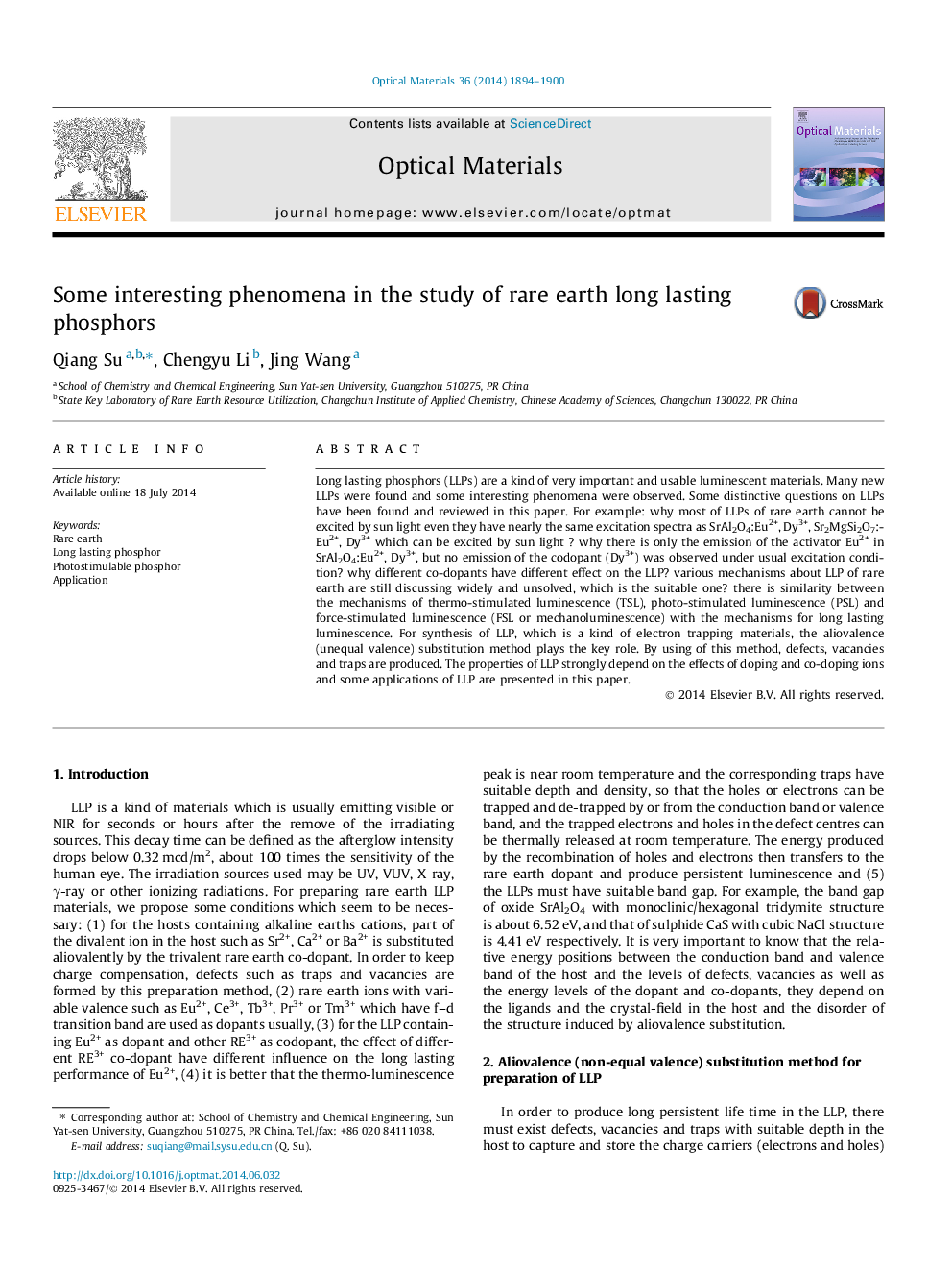| Article ID | Journal | Published Year | Pages | File Type |
|---|---|---|---|---|
| 1494106 | Optical Materials | 2014 | 7 Pages |
•Aliovalence substitution methods for preparation of LLPs are reviewed.•The effects of RE3+ co-dopants on the LLP of Eu2+ in different hosts are reviewed.•Various mechanisms of rare earth activated LLPs are classified and reviewed.•Rare earth LLP shows new application in AC LEDs as eye-protecting lighting source.
Long lasting phosphors (LLPs) are a kind of very important and usable luminescent materials. Many new LLPs were found and some interesting phenomena were observed. Some distinctive questions on LLPs have been found and reviewed in this paper. For example: why most of LLPs of rare earth cannot be excited by sun light even they have nearly the same excitation spectra as SrAl2O4:Eu2+, Dy3+, Sr2MgSi2O7:Eu2+, Dy3+ which can be excited by sun light ? why there is only the emission of the activator Eu2+ in SrAl2O4:Eu2+, Dy3+, but no emission of the codopant (Dy3+) was observed under usual excitation condition? why different co-dopants have different effect on the LLP? various mechanisms about LLP of rare earth are still discussing widely and unsolved, which is the suitable one? there is similarity between the mechanisms of thermo-stimulated luminescence (TSL), photo-stimulated luminescence (PSL) and force-stimulated luminescence (FSL or mechanoluminescence) with the mechanisms for long lasting luminescence. For synthesis of LLP, which is a kind of electron trapping materials, the aliovalence (unequal valence) substitution method plays the key role. By using of this method, defects, vacancies and traps are produced. The properties of LLP strongly depend on the effects of doping and co-doping ions and some applications of LLP are presented in this paper.
